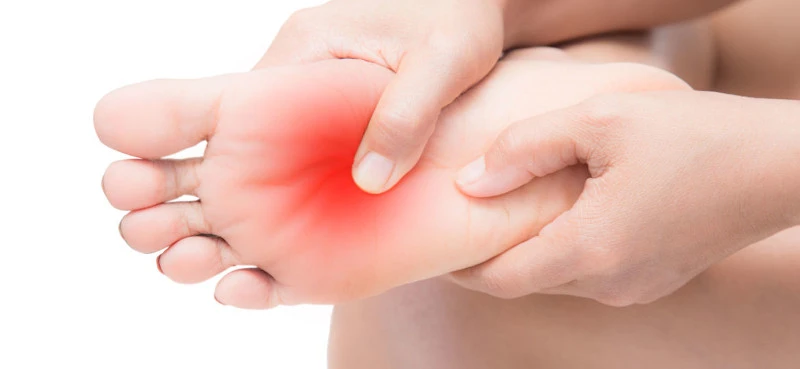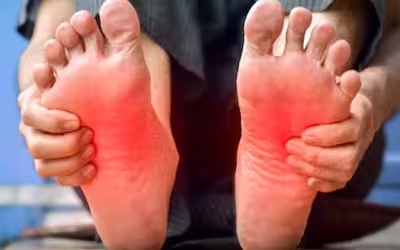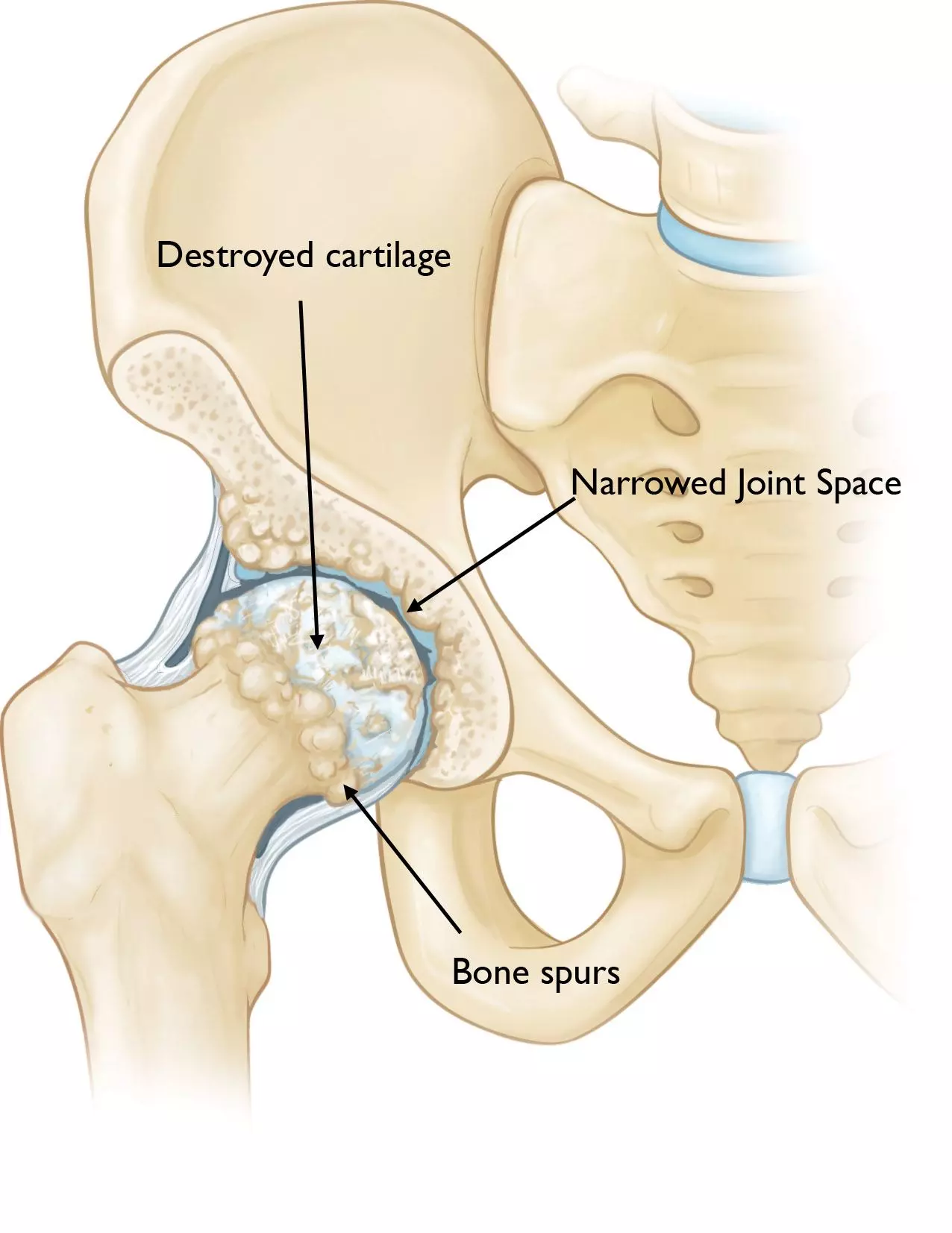Arm, Leg & Joint Pain
Diabetic Peripheral Neuropathy
Painful Diabetic Peripheral Neuropathy: Understanding, Symptoms, and Treatment
Red Butte Pain Solutions is your trusted partner in managing diabetic nerve pain. If you or a loved one are experiencing painful diabetic peripheral neuropathy, you’re not alone. Many people in Chandler, Ahwatukee, Tempe, Sun Lakes, Maricopa, and Laveen, Arizona face similar challenges. Our team is here to help you find relief and improve your quality of life.
What is Diabetic Peripheral Neuropathy?
Diabetic peripheral neuropathy is a type of nerve damage caused by high blood sugar levels. It most often affects the nerves in your feet and legs, but it can also impact your hands and arms. This condition can cause a range of symptoms, from mild discomfort to severe pain, making daily activities difficult.
Common Symptoms of Diabetic Neuropathy
Recognizing the symptoms of diabetic neuropathy is the first step in managing it effectively. Here are some common signs to look out for:
- Diabetic Nerve Pain in Feet: Many people experience sharp, burning, or tingling pain in their feet. This pain can be constant or come and go.
- Numbness and Tingling: You might feel a loss of sensation or a “pins and needles” sensation in your feet or hands.
- Muscle Weakness: Weakness in your muscles can make it hard to walk or perform simple tasks.
- Sensitivity to Touch: Even a light touch can cause significant pain.
- Balance Problems: Nerve damage can affect your balance, increasing the risk of falls.
Effective Treatments for Diabetic Neuropathy
At Red Butte Pain Solutions, we offer a variety of treatments to help manage and alleviate your diabetic nerve pain. Our goal is to provide personalized care that addresses your unique needs. Here are some effective treatment options:
Medications
- Pain Relievers: Over-the-counter pain medications like acetaminophen and ibuprofen can help manage mild pain.
- Prescription Medications: For more severe pain, medications like gabapentin, pregabalin, or duloxetine might be prescribed.
Physical Therapy
- Exercise Programs: Customized exercise routines can improve muscle strength and reduce pain.
- Balance Training: Specific exercises can help improve your balance and reduce the risk of falls.
Lifestyle Changes
- Blood Sugar Control: Keeping your blood sugar levels within a target range is crucial. This can slow the progression of neuropathy and relieve symptoms.
- Healthy Diet: Eating a balanced diet rich in fruits, vegetables, and whole grains can support overall health.
Advanced Treatments
- Nerve Stimulation: Techniques like transcutaneous electrical nerve stimulation (TENS), spinal cord stimulation (SCS), and HFX High-frequency spinal cord stimulation can help reduce pain by stimulating your nerves.
- Innovative Therapies: We stay updated with the latest advancements in neuropathy treatment to offer you the best care possible.
Why Choose Red Butte Pain Solutions?
At Red Butte Pain Solutions, we understand how debilitating diabetic nerve pain can be. Our compassionate team is dedicated to helping you find relief through comprehensive, personalized care. Here’s why you should choose us:
- Expertise: Our specialists have extensive experience in treating diabetic neuropathy.
- Advanced Technology: We use the latest technology to provide effective treatments.
- Personalized Care: We create customized treatment plans tailored to your specific needs.
- Convenient Locations: We proudly serve the communities of Chandler, Ahwatukee, Tempe, Sun Lakes, Maricopa, and Laveen, Arizona.
Get Started on Your Path to Relief
Don’t let diabetic nerve pain control your life. Contact Red Butte Pain Solutions today to schedule a consultation. Let us help you manage your symptoms and improve your quality of life.
Contact Us
Call us at 602-633-4334 or Pre-Register to book an appointment today.
What Causes Diabetes Leg Pain? Causes and Relief Options
If you’re living with diabetes and dealing with nagging leg pain, you’re not alone. Many people with diabetes struggle with pain, numbness, or cramping in their legs—often unsure of what’s causing it or how to get relief. The good news? You don’t have to just live...
Is Diabetic Nerve Pain Reversible?
"Is diabetic nerve pain reversible?" This is one of the most common questions I hear from patients at Red Butte Pain Solutions. Diabetic peripheral neuropathy (DPN) can be frustrating and life-changing, especially when patients feel like their symptoms are progressing...
Is Heel Pain a Sign of Cancer? Rare but Important to Know
Heel pain is one of the most common foot complaints, affecting people of all ages and activity levels. For most individuals, it results from everyday wear and tear, overuse, or minor injuries related to walking, running, or standing for long periods. Conditions like...
Nerve Pain in Cancer: Causes and Relief Options
Nerve pain in cancer—also known as neuropathic cancer pain (NCP)—is a complex and often debilitating type of pain. It affects a significant number of patients either due to direct tumor invasion or as a side effect of cancer treatments like surgery, chemotherapy, or...
What Are the Risk Factors for Painful Diabetic Neuropathy?
Understand what increases your chances of developing nerve pain from diabetes—and how to prevent it. Living with diabetes already requires constant attention to your health. But for many people, the real trouble starts when painful diabetic neuropathy sets in. This...
Do Stims Stim? 20-Years of Spinal Cord Stimulation Innovation
Over the last 20 years, spinal cord stimulation has transformed significantly. It’s evolved from a basic pain relief option to a sophisticated, adaptable therapy with specialized features. When spinal cord stimulators (SCS) first emerged, they offered hope but little...
Do Stims Stim? The HFX Spinal Cord Stimulator
Introduction At Red Butte Pain Solutions, we’re always exploring new options for effective pain relief, including spinal cord stimulator (SCS) devices. Many of you may have read our recent post on Differential Targeted Multiplex (DTM) stimulation, where we covered its...
Breaking New Ground in Pain Management: DTM and Closed-Loop Spinal Cord Stimulation
When I was in training, I was taught that "Stims stim," meaning there wasn’t much difference between spinal cord stimulation (SCS) devices beyond customer service for our patients. Back then, no SCS devices had MRI compatibility, and the only real debate was whether...
Fighting Diabetic Neuropathy: A Personal Journey
Diabetic Neuropathy: A Pathway to Loss About 12 years ago, I lost my cousin, well, technically my mother's cousin, to complications from diabetes. He was a funny, gregarious, larger-than-life individual who always made me laugh, gave sage advice, and was fun to be...
Understanding and Treating Diabetic Peripheral Neuropathy at Red Butte Pain Solutions
Living with diabetic peripheral neuropathy, often referred to as diabetic nerve pain, can be incredibly challenging. At Red Butte Pain Solutions, located in Chandler, Arizona, we understand the unique struggles faced by those in our community dealing with this...
Joint Pain / Arthritis
Related Topics:
Joint Pain Relief at Red Butte Pain Solutions
Are you living in Chandler, Sun Lakes, Ahwatukee, Phoenix, Laveen, Tempe, Maricopa, Casa Grande, Gilbert, or Mesa and struggling with joint pain? Red Butte Pain Solutions is here to help!
Understanding Joint Pain
Joint pain can be caused by various conditions. Common causes include rotator cuff issues and osteoarthritis. These conditions can lead to inflammation and pain in the joints, making daily activities challenging.
In the United States, an estimated 53.2 million adults (21.2%) have been diagnosed with some form of arthritis. Furthermore, in 2021, approximately 20.9% of U.S. adults (51.6 million persons) experienced chronic pain. These statistics highlight the prevalence of joint pain issues in our society.
Treatment Options
THere are a wide range of treatment options to help manage your joint pain, including:
- Physical Therapy: This can help improve your range of motion and strengthen the muscles surrounding the joint.
- Medications: Nonsteroidal anti-inflammatory drugs (NSAIDs) can relieve pain and reduce inflammation.
- Joint Injections: These are used to deliver medications directly into the joint, providing more targeted pain relief.
Specialized Care at Red Butte Pain Solutions
At Red Butte Pain Solutions, we specialize in performing joint injections under ultrasound guidance. This technique has been shown to have a high success rate. For example, ultrasound-guided hip injections have an accuracy rate between 97% and 100%, and ultrasound-guided glenohumeral joint injections have a success rate of 92.5%.
Conclusion
Don’t let joint pain hold you back. At Red Butte Pain Solutions, we’re committed to helping our patients in Arizona find relief from joint pain. Contact us today to learn more about our services and how we can help you Restore Quality to Your life.
Is Heel Pain a Sign of Cancer? Rare but Important to Know
Heel pain is one of the most common foot complaints, affecting people of all ages and activity levels. For most individuals, it results from everyday wear and tear, overuse, or minor injuries related to walking, running, or standing for long periods. Conditions like...
What Causes Aching Pain Between the Shoulder Blades?
Aching pain between the shoulder blades is a common complaint that often comes and goes. But sometimes, it can be a sign of something more serious. Understanding the potential causes can help you get the right treatment. Common Causes of Aching Pain Between the...
Shoulder Arthritis: Understanding and Overcoming It
Shoulder arthritis is a condition I encounter frequently in my practice. Patients often ask, “Doc, does shoulder arthritis mean I need a shoulder replacement?” This common concern provides an opportunity to explore the causes, treatments, and management options for...
The Connection Between Hip Pain and Back Pain
When I was a kid, there was a song called "The Skeleton Dance" where we sang, "The foot bone's connected to the leg bone. The leg bone's connected to the knee bone..." and so on. This simple, catchy tune shows how the body’s structures are biomechanically connected. I...
Rotator Cuff Pain: Getting Back in the Game
Rotator cuff pain can sideline even the most active individuals, making tasks like reaching, lifting, or enjoying sports a challenge. It can disrupt everything from golfing and pickleball to simple daily activities, such as dressing or sleeping comfortably. Recently,...
Regenerative Medicine: Platelet-rich plasma Injections
Unlocking Healing with Platelet-Rich Plasma Injection and Shock Wave Treatment Regenerative medicine helps the body heal naturally by stimulating tissue repair and renewal. It offers non-surgical treatments for chronic pain, injuries, and joint conditions....
Overcoming Immunotherapy-Related Joint Pain in Cancer
When my patient was first referred to me by her oncologist, she was at a breaking point. Diagnosed with lung cancer, she had started immunotherapy in hopes of a better outcome. However, while the treatment was successfully attacking her cancer, it brought an...
Effective Knee Pain Relief: Genicular Nerve Ablation Explained
What is Chronic Knee Pain? Chronic knee pain can make daily activities hard. It's a common problem affecting many people. Walking, climbing stairs, and even sitting can be painful. What is Genicular Nerve Ablation? Genicular nerve ablation is a treatment for chronic...
Understanding Shoulder Pain: Exploring Rotator Cuff Issues
John's Journey “John,” an avid golfer, pickleball player, and former athlete, walked into our clinic with a common complaint - shoulder pain. Despite nursing his pain for six weeks with ice, ibuprofen, and physical therapy exercises, John’s condition wasn’t improving....
Hip Pain
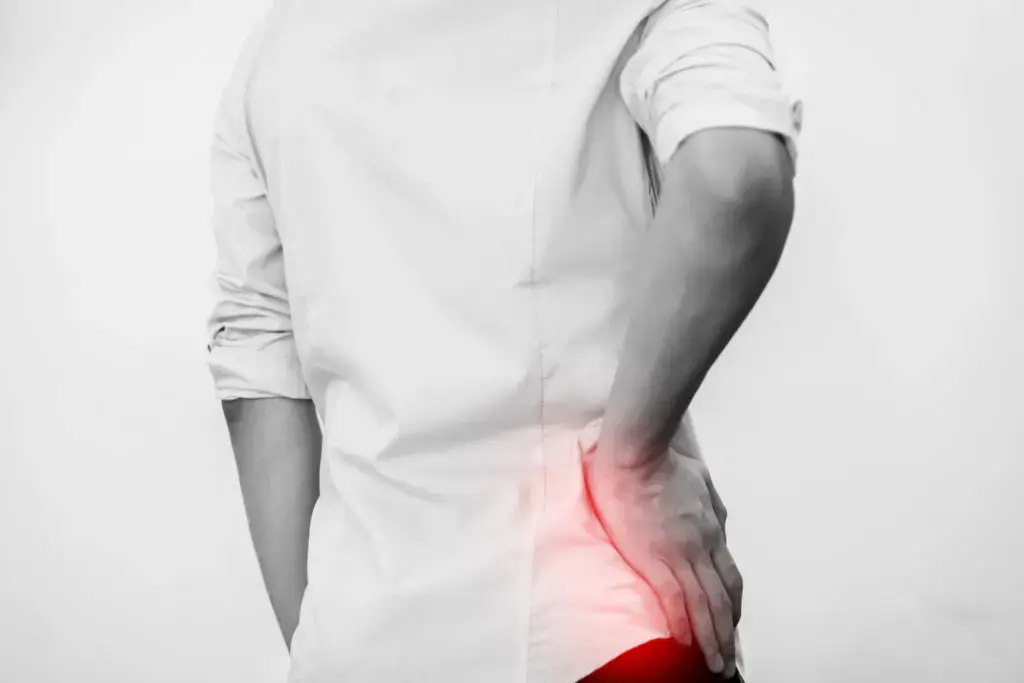
Hip pain can disrupt everything from your morning routine to your favorite activities. Whether it’s a dull ache or sharp discomfort, hip pain can affect your mobility and quality of life.
Prevalence of Hip Pain
Hip pain affects a substantial portion of the population. Studies indicate that approximately 19.2% of adults experience hip pain lasting for one month or longer within a year. The prevalence increases with age, with higher rates observed in individuals aged 65 and over. That’s over 10.4 million people a year who experience hip pain.
Why Does Hip Pain Happen?
Hip pain has many potential causes, ranging from problems within the joint itself to issues in nearby areas. Here are some of the most common culprits:
Arthritis
Arthritis is one of the most well-known causes of hip pain, especially as we age.
- Osteoarthritis: This wear-and-tear condition damages cartilage, leading to stiffness, pain, and sometimes a grinding sensation in the joint.
- Rheumatoid Arthritis: This autoimmune condition causes inflammation in the joint lining, leading to swelling and discomfort.
- Psoriatic Arthritis: Often associated with psoriasis, this type can also target the hip joint, causing pain and limited motion.
If your hip pain feels worse after periods of inactivity or flares up with increased activity, arthritis could be the cause.
Bursitis
Bursae are tiny, fluid-filled sacs that cushion the areas where muscles and tendons glide over bones. When these sacs become inflamed, the result is bursitis.
- Trochanteric Bursitis: This is the most common type and causes pain on the outside of the hip.
- Iliopsoas Bursitis: Located near the groin, this type causes deep, aching pain in the front of the hip.
Bursitis often stems from overuse or repetitive movements. It may feel tender to the touch and worse when lying on the affected side.
Tendonitis
Tendonitis, or inflammation of the tendons, can result from overuse, poor biomechanics, or injury.
- Hip Flexor Tendonitis: Pain often felt in the groin or front of the hip.
- Iliotibial Band Syndrome: A common issue in runners, this condition causes pain on the outer side of the hip.
- Gluteal Tendon Inflammation: Pain originating from the gluteus medius or gluteus minimus tendons, often confused with bursitis.
With tendonitis, you might feel sharp pain during movement and tenderness when pressing on the affected area.
Osteonecrosis (Avascular Necrosis)
When blood flow to the hip bone is interrupted, it can lead to bone tissue death, a condition called osteonecrosis.
Trauma, steroid use, and certain medical conditions, such as lupus, can increase the risk. Pain typically starts subtly but worsens over time, especially during weight-bearing activities.
Referral Pain from Other Structures
Sometimes, hip pain isn’t entirely about the hip itself. The discomfort you feel might actually be referred from another area.
- Sacroiliac Joint Dysfunction: This joint connects the lower spine to the pelvis. When inflamed or misaligned, it can cause pain in the lower back and hips.
- Lower Back Pain by the Hip: Conditions like herniated discs or sciatica often refer pain to the hip area. You might feel a combination of hip pain and tingling, numbness, or weakness in the leg.
- Pelvic Issues: Problems with pelvic muscles or ligaments can mimic hip pain, particularly in the groin or lower back.
Understanding the relationship between the lower back, pelvis, and hip is key to finding the right treatment.
How Is Hip Pain Diagnosed?
Getting to the root cause of hip pain involves a detailed evaluation. At Red Butte Pain Solutions, we take a comprehensive approach:
- Listening to Your Story: Your description of symptoms, activities, and medical history provides critical clues.
- Physical Examination: Assessing your hip’s range of motion, strength, and specific pain points helps narrow down the possibilities.
- Imaging Studies: X-rays, MRIs, and CT scans are invaluable for detecting structural issues like arthritis, fractures, or soft tissue damage.
- Diagnostic Injections: In some cases, we may use guided injections to pinpoint the exact source of your pain. For example, numbing the sacroiliac joint can confirm if it’s contributing to your discomfort.
This thorough process ensures we address not just the symptoms but the underlying cause.
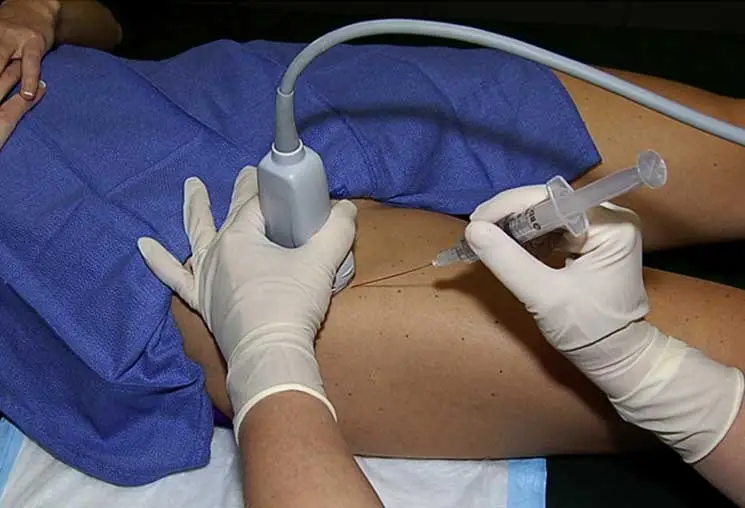
Treatment Options for Hip Pain
Treatment strategies depend on the underlying cause of hip pain. Common approaches include:
Medications
- Non-Steroidal Anti-Inflammatory Drugs (NSAIDs): Effective in reducing pain and inflammation. A network meta-analysis indicated that NSAIDs are beneficial for hip osteoarthritis pain management.
- Corticosteroid Injections: Provide pain relief for conditions like bursitis and arthritis by reducting swelling and inflammation in the underlying structures causing the pain. These injections, when performed under ultrasound guidance can selectively deliver steroid to the structures causing your pain.
Physical Therapy
Tailored exercise programs can improve mobility, strengthen muscles, and alleviate pain. A systematic review demonstrated that physiotherapist-led interventions effectively improve pain and function in individuals with hip-related pain.
Platelet-Rich Plasma (PRP) Therapy
PRP involves injecting concentrated platelets to promote healing. Evidence suggests PRP may be beneficial for hip osteoarthritis and tendonitis.
Extracorporeal Shock Wave Therapy (ESWT)
ESWT uses shock waves to stimulate healing in affected tissues. Studies indicate ESWT can be effective for treating tendinopathies and may offer pain relief for hip conditions.
Lifestyle Adjustments
- Glucosamine-Chondroitin: These supplements may help support cartilage health, potentially reducing arthritis symptoms over time.
- Weight Management: Reducing excess weight can relieve stress on your hips.
- Activity Modifications: Simple changes, like avoiding repetitive movements, can help reduce flare-ups.
Nutrition and Hip Pain
Nutrition plays an essential role in managing and potentially preventing hip pain, especially when the pain is linked to conditions like arthritis, osteoporosis, or soft tissue inflammation. Proper dietary choices can help reduce inflammation, support joint health, and strengthen bones and connective tissues.
Anti-Inflammatory Diet
Chronic inflammation often contributes to hip pain, particularly in arthritis and tendonitis. An anti-inflammatory diet can help reduce systemic inflammation.
Recommended Foods:
- Fruits and vegetables rich in antioxidants and vitamins, such as dark leafy greens, berries, and cruciferous vegetables.
- Omega-3 fatty acids from fatty fish like salmon and mackerel, walnuts, flaxseeds, and chia seeds.
- Spices like turmeric (curcumin) and ginger for their natural anti-inflammatory properties.
Foods to Avoid:
- Processed foods high in trans fats and refined sugars.
- Red and processed meats.
Bone-Strengthening Nutrients
Strong bones help prevent fractures and conditions like osteonecrosis. Key nutrients include calcium, vitamin D, and magnesium.
- Calcium is found in dairy products, fortified plant-based milk, leafy greens, and almonds.
- Vitamin D supports calcium absorption and can be obtained from fatty fish, fortified foods, and sunlight.
- Magnesium aids bone density and muscle function and is found in nuts, seeds, whole grains, and dark chocolate.
Joint Health Supplements
Supplements can support cartilage health and may alleviate joint pain.
- Glucosamine and chondroitin are often used for osteoarthritis and may help slow cartilage breakdown. Though evidence on their efficacy is mixed, many people report relief.
- Hydrolyzed collagen may improve joint elasticity and strength.
- Vitamin C, found in citrus fruits, strawberries, and bell peppers, is crucial for collagen synthesis and joint repair.
Hydration
Staying hydrated maintains the elasticity of cartilage and prevents joint stiffness. Aim for at least eight glasses of water daily, or more if you’re active or live in a hot climate.
Weight Management
Excess weight puts stress on the hip joints, worsening pain and accelerating joint degeneration. A nutrient-dense diet paired with regular physical activity can help manage weight and relieve joint pressure.
Special Considerations for Osteonecrosis and Tendonitis
- Vitamin K, found in green vegetables like spinach and kale, supports bone and vascular health.
- Protein is essential for tendon repair and muscle strength. Lean meats, eggs, and legumes are excellent sources.
Surgical Options
When conservative treatments fail, surgery may be necessary. Options include:
- Hip arthroscopy for labral tears or impingement.
- Joint replacement for advanced arthritis or osteonecrosis.
Surgical outcomes vary based on individual conditions and should be discussed with a healthcare provider.
When to Seek Help for Hip Pain
If hip pain limits your daily activities or worsens over time, professional care can make a difference. Early intervention prevents complications and helps restore your quality of life. If you are stuggling with hip pain, contact Red Butte Pain Solutions at 602-633-4334 to schedule a consultation and start your journey toward lasting relief. At Red Butte Pain Solutions, we offer:
- Comprehensive evaluations to identify the root cause of hip pain.
- Cutting-edge treatments tailored to your needs.
- A compassionate, patient-focused approach to care.
The Connection Between Hip Pain and Back Pain
When I was a kid, there was a song called "The Skeleton Dance" where we sang, "The foot bone's connected to the leg bone. The leg bone's connected to the knee bone..." and so on. This simple, catchy tune shows how the body’s structures are biomechanically connected. I...
Shoulder Pain
Understanding Shoulder Pain: Causes, Prevention, and Treatments
Shoulder pain is a common condition that affects many people in Chandler, Ahwatukee, Sun Lakes, Maricopa, Casa Grande, Tempe, and Laveen. It can make everyday tasks difficult, from reaching for something on a high shelf to even brushing your hair. This article explores the commonality of shoulder pain, its causes, prevention strategies, and treatments.
Commonality of Shoulder Pain
Shoulder pain is a prevalent issue, with an estimated occurrence rate of 7-26%. It’s the third most common musculoskeletal complaint, and it can come on gradually or abruptly, ranging from mild to excruciating.
Causes of Shoulder Pain
The causes of shoulder pain are diverse and can develop from normal everyday activities or due to an accident or injury. Common causes include:
- Rotator Cuff Injuries: The rotator cuff, a collection of four small muscles and a network of tendons, helps you lift and move your arms. Wear and tear on these muscles and tendons can lead to injuries.
- Osteoarthritis: This degenerative joint disease can cause shoulder pain.
- Bursitis: Inflammation of the small sacs that cushion the bones, tendons, and muscles near joints can result in shoulder pain.
- Referred Pain: Pain can stem from problems in other parts of your body.
Prevention of Shoulder Pain
Preventing shoulder pain involves several strategies:
- Correct Posture: Maintaining good posture while sitting or standing can help prevent shoulder pain.
- Avoid Overhead Lifting: Avoid lifting objects overhead until pain improves.
- Regular Exercise: Regular exercise and a healthy diet can help avoid injury.
- Proper Lifting Techniques: Follow safe lifting rules, keeping your back straight and using your legs.
Treatments for Shoulder Pain
Treatments for shoulder pain range from home remedies to medical interventions:
- Home Remedies: Rest, ice, heat, and exercises can help relieve shoulder pain.
- Medication: Nonsteroidal anti-inflammatory drugs (NSAIDs) can help reduce inflammation and pain.
- Physical Therapy: Physical therapy can help improve strength and flexibility.
Ultrasound-Guided Shoulder Injections
Ultrasound-guided injections allow for more accurate treatment of the affected joint and improve the chance of treatment success.
Suprascapular Nerve Ablations
Suprascapular nerve ablations involve using radiofrequency energy to selectively destroy the nerve fibers responsible for transmitting pain signals from the shoulder joint to the brain. This procedure can provide long-lasting relief when injections or shoulder surgery fail to help or are not an option.
Conclusion
Understanding shoulder pain and its causes can help individuals in Chandler, Ahwatukee, Sun Lakes, Maricopa, Casa Grande, Tempe, and Laveen seek appropriate treatment and implement preventative measures. Treatments like ultrasound-guided shoulder injections and suprascapular nerve ablations offer promising results for those suffering from chronic shoulder pain. If you or someone you know is suffering from shoulder pain, contact us at Red Butte Pain Solutions to get started on Restoring Quality to Your Life.
What Causes Aching Pain Between the Shoulder Blades?
Aching pain between the shoulder blades is a common complaint that often comes and goes. But sometimes, it can be a sign of something more serious. Understanding the potential causes can help you get the right treatment. Common Causes of Aching Pain Between the...
Shoulder Arthritis: Understanding and Overcoming It
Shoulder arthritis is a condition I encounter frequently in my practice. Patients often ask, “Doc, does shoulder arthritis mean I need a shoulder replacement?” This common concern provides an opportunity to explore the causes, treatments, and management options for...
Rotator Cuff Pain: Getting Back in the Game
Rotator cuff pain can sideline even the most active individuals, making tasks like reaching, lifting, or enjoying sports a challenge. It can disrupt everything from golfing and pickleball to simple daily activities, such as dressing or sleeping comfortably. Recently,...
Regenerative Medicine: Platelet-rich plasma Injections
Unlocking Healing with Platelet-Rich Plasma Injection and Shock Wave Treatment Regenerative medicine helps the body heal naturally by stimulating tissue repair and renewal. It offers non-surgical treatments for chronic pain, injuries, and joint conditions....
Understanding Shoulder Pain: Exploring Rotator Cuff Issues
John's Journey “John,” an avid golfer, pickleball player, and former athlete, walked into our clinic with a common complaint - shoulder pain. Despite nursing his pain for six weeks with ice, ibuprofen, and physical therapy exercises, John’s condition wasn’t improving....
Knee Pain
Understanding Knee Pain: Causes, Prevention, and Treatments
Knee pain is a common ailment affecting approximately 25% of adults. Its prevalence has increased almost 65% over the past 20 years, accounting for nearly 4 million primary care visits annually. It’s the second most prevalent condition, with specific types like patellofemoral pain being one of the most common forms of knee pain.
Common Causes of Knee Pain
Knee pain may result from an injury, such as a ruptured ligament or torn cartilage. Medical conditions including arthritis, gout, and infections can also cause knee pain. Other factors contributing to knee pain include overuse from physical activities, exercise, playing sports, and doing physical work.
Protecting and Preventing Knee Issues
To protect your knees and prevent issues, consider the following:
- Stay Active: Regular physical activity helps prevent stiffness and muscle atrophy.
- Maintain a Healthy Weight: Extra pounds add significant stress to the knees.
- Strengthen Your Muscles: Focus on exercises that target your hamstrings, quadriceps, gluteus muscles, hip flexors, and psoas.
- Choose Low-Impact Exercises: Activities like cycling and swimming can help keep knee cartilage healthy.
Treatments for Knee Pain
When knee pain becomes chronic and severe, several treatments are available:
- Ultrasound-Guided Joint Injections: This procedure involves injecting medication into the knee joint using ultrasound imagery for guidance. This can help reduce inflammation and pain.
- Viscosupplementation: This involves injecting a gel-like fluid called hyaluronic acid into the knee joint. It acts as a lubricant to enable bones to move smoothly over each other and as a shock absorber for joint loads.
- Genicular Nerve Ablations (GNA): GNA is a method to treat chronic knee pain using controlled radiofrequency energy. The heat “knocks out” the sensory nerves around the knee that send pain signals to the brain.
In conclusion, understanding knee pain, its causes, prevention methods, and available treatments can help individuals manage their knee pain effectively. It’s always important to consult with a healthcare provider for personalized advice and treatment options. If you or a loved one of struggling with knee pain, Pre-Register to meet with the experts at Red Butte Pain Solutions and get started on Restoring Quality to Your Life.
Effective Knee Pain Relief: Genicular Nerve Ablation Explained
What is Chronic Knee Pain? Chronic knee pain can make daily activities hard. It's a common problem affecting many people. Walking, climbing stairs, and even sitting can be painful. What is Genicular Nerve Ablation? Genicular nerve ablation is a treatment for chronic...

